In recent years, the kitchen appliance market has seen a surge in the popularity of panini presses. These compact, versatile devices have become a staple in many homes, offering a quick and convenient way to enjoy delicious sandwiches. As the demand for panini presses continues to grow, it’s fascinating to explore the factors that drive this trend and the potential future of this product in the global kitchen appliance scene.
The Rise of Panini Presses in the Kitchen Appliance Market
The surge in popularity of panini presses has been a fascinating trend within the kitchen appliance market. These compact, versatile machines have managed to carve out a significant niche, especially among food enthusiasts and the health-conscious crowd. Let’s delve into the factors that have propelled the rise of panini presses from a niche product to a staple in many kitchens.
Once reserved for the gourmet and professional culinary circles, the art of making paninis has now become a weekend ritual for many. The process of pressing a sandwich until it’s crispy and golden-brown has become a satisfying experience that’s easily accessible to home cooks. The convenience and the ability to create a delicious, homemade version of the popular fast-food item have been the cornerstone of this growth.
One of the key drivers behind the rise of panini presses is the increasing demand for convenience food without compromising on quality. As busy lifestyles become the norm, the allure of a quick yet satisfying meal that can be made in minutes is irresistible. Panini presses have answered this call by allowing individuals to enjoy a warm, freshly toasted sandwich with all the fixings, minus the wait.
The health and wellness movement has also played a pivotal role in the popularity of panini presses. Many consumers are opting for homemade meals over processed snacks, and panini presses offer a healthy alternative to fast-food options. By using fresh ingredients and controlling the cooking process, individuals can tailor their paninis to their dietary needs, whether it’s vegan, gluten-free, or low-carb.
Another contributing factor is the rise of social media and the sharing of recipes. With platforms like Instagram and TikTok, home cooks can showcase their culinary skills and share their creations with a global audience. Panini presses have become a trendy tool for creating visually appealing and appetizing content, further fueling their popularity.
The innovation in panini press designs has also played a significant role in their growth. Modern panini presses come with a variety of features such as adjustable heat settings, non-stick surfaces, and removable plates for easy cleaning. These innovations have made the cooking experience more enjoyable and the final product more impressive.
In terms of the market, panini presses have seen a surge in sales across different regions. Europe, in particular, has been a hotbed for this trend, with countries like Italy and France leading the way. The cultural affinity for bread-based dishes has certainly contributed to the widespread adoption of panini presses. In North America, the convenience and versatility of these devices have resonated with a diverse range of consumers.
The global kitchen appliance market has also been influenced by the rise of gourmet food culture. As more people seek out unique and authentic flavors, the panini press has become a versatile tool for experimenting with different ingredients and flavors. From classic ham and cheese to exotic combinations like salmon and avocado, the possibilities are endless.
Furthermore, the trend towards home entertaining and casual dining has boosted the demand for panini presses. The ability to create a variety of sandwiches at home has made it easier for hosts to serve a range of appetizers and meals, without the need for complex cooking skills or equipment.
In summary, the rise of panini presses in the kitchen appliance market is a testament to the evolving needs and preferences of consumers. The combination of convenience, health consciousness, and the sharing of culinary trends has created a perfect storm that has propelled these devices into the mainstream. As the market continues to grow, we can expect to see even more innovations and variations on this beloved kitchen gadget.
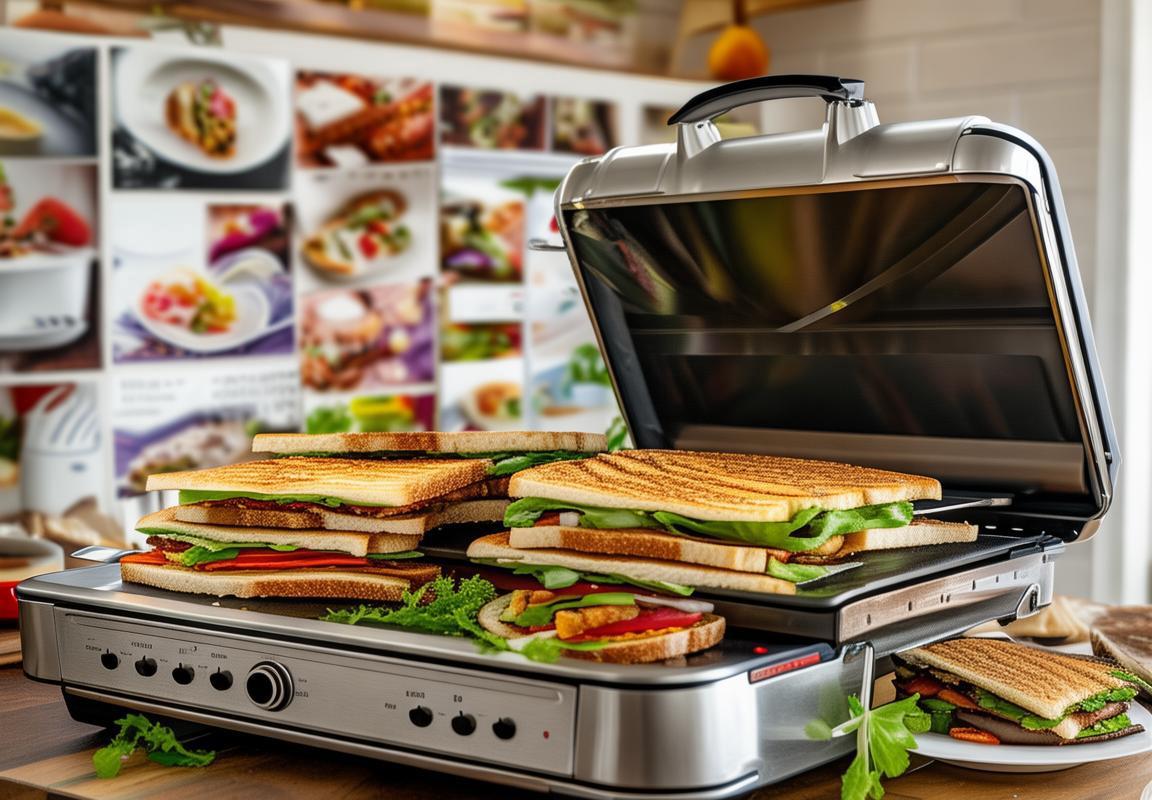
The Global Scenario: Europe and North America’s Love for Panini Presses
The global kitchen appliance market has witnessed a significant surge in the popularity of panini presses. Europe and North America have emerged as the leading regions where these handy gadgets have captured the hearts of consumers. Let’s delve into the reasons behind this love affair with panini presses in these regions.
In Europe, the culinary landscape is rich with a variety of food cultures, each contributing to the widespread appreciation for panini presses. The Italian influence, with its emphasis on fresh ingredients and hearty sandwiches, has been a major driver. From the bustling streets of Paris to the quaint cafes in Rome, the art of making a perfect panini is a cherished skill. This has led to a high demand for high-quality panini presses that can deliver the authentic taste and texture of a traditional Italian sandwich.
North America, on the other hand, has seen panini presses become a staple in the modern kitchen. The fusion of cultures in the United States and Canada has created a market that craves both traditional and innovative sandwich experiences. The convenience of a panini press, which can cook a sandwich to perfection in minutes, has made it a favorite among busy professionals and families alike. The rise of health-conscious consumers has also played a role, as these presses offer a way to prepare a quick, homemade meal with minimal oil and preservatives.
The European market for panini presses is characterized by a strong preference for sleek, modern designs that complement the aesthetic of contemporary kitchens. Brands like DeLonghi, Breville, and Tefal have capitalized on this trend, offering a range of stylish and efficient models. The Italian heritage of these brands adds to their appeal, as consumers seek products that not only serve a practical purpose but also evoke a sense of culinary tradition.
In North America, the market is equally diverse, with a mix of traditional and innovative brands. The demand for panini presses has expanded beyond the traditional European-style sandwiches to include a variety of flatbreads, wraps, and even pizza. Brands such as Hamilton Beach, Cuisinart, and George Foreman have introduced models that cater to these new preferences, often with features like adjustable temperature controls and non-stick surfaces for easy cleaning.
The popularity of panini presses in both regions is also tied to the growing interest in home cooking. As people look for ways to enjoy restaurant-quality meals at home, the convenience and ease of use of these presses have made them an indispensable tool. The ability to quickly prepare a gourmet sandwich without the need for additional cooking utensils or ovens has been a significant draw for consumers who value efficiency and simplicity.
The environmental and health consciousness in both Europe and North America has also influenced the demand for panini presses. With a focus on reducing waste and choosing healthier options, these appliances have become a symbol of sustainable living. The compact size of panini presses means they consume less energy and space, aligning with the values of eco-conscious consumers.
In terms of technological advancements, the panini press market has seen innovations that cater to the needs of modern consumers. Features like digital displays for precise temperature control, adjustable pressure settings, and programmable settings for different types of bread have made these appliances more versatile and user-friendly. Smart technology integration is also on the rise, with some models offering connectivity to smartphones, allowing users to monitor and control their press remotely.
In conclusion, the global scenario of panini presses in Europe and North America reflects a cultural shift towards convenient, healthy, and delicious home-cooked meals. The demand for these appliances has been fueled by a combination of culinary traditions, technological advancements, and consumer values, making the panini press an integral part of the modern kitchen in these regions.
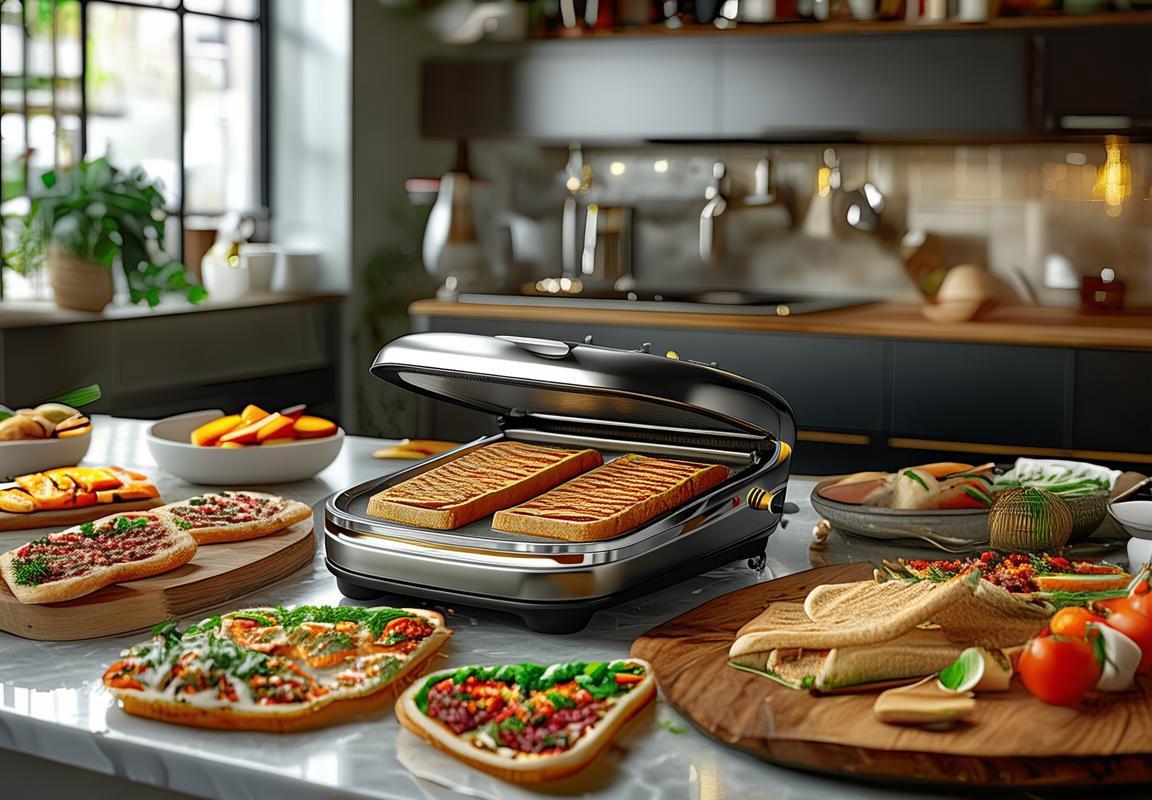
ISO9001 Certification: A Mark of Quality for Panini Press Manufacturers
In the competitive landscape of kitchen appliance manufacturing, the ISO 9001 certification has become a beacon of quality and reliability. For panini press manufacturers, achieving this prestigious standard is not just a regulatory requirement; it’s a testament to their commitment to excellence.
The ISO 9001 standard is an internationally recognized quality management system that focuses on customer satisfaction, continuous improvement, and the effective management of processes. For panini press manufacturers, this certification ensures that every aspect of their production, from design to delivery, adheres to stringent quality controls.
One of the key elements of ISO 9001 is the emphasis on customer focus. Panini press manufacturers must demonstrate that they understand customer needs and expectations, and that they have systems in place to meet and exceed these standards. This means that the products they deliver are not just functional, but also designed with the end-user in mind, offering ease of use, durability, and reliability.
The certification process involves a thorough audit by a third-party organization. This audit evaluates the manufacturer’s ability to consistently provide products that meet pre-determined quality standards. It looks at various aspects, including the company’s quality policy, management responsibility, resource allocation, and the actual production process.
In the realm of panini presses, the certification process delves into the specifics of how these appliances are designed and manufactured. It examines the materials used, the precision of the components, and the efficiency of the manufacturing lines. It also assesses the company’s ability to manage non-conforming products and the measures taken to prevent defects.
Manufacturers must also show that they have a robust system for continuous improvement. This means they are actively seeking ways to enhance their products and processes, often through feedback from customers and employees. For panini press manufacturers, this could involve innovations in heating technology, improved safety features, or even the introduction of new design elements that make the appliance more user-friendly.
One of the most significant aspects of ISO 9001 certification is the documentation requirement. Manufacturers must maintain comprehensive records of all processes, from the sourcing of raw materials to the final product inspection. This not only ensures traceability but also allows for a quick response to any quality issues that may arise.
The impact of ISO 9001 certification on panini press manufacturers is multifaceted. On the one hand, it provides a competitive edge in the market, as consumers often prefer certified products due to their perceived higher quality. On the other hand, it serves as an internal management tool, helping companies to streamline operations and reduce waste.
Certification also opens up new markets for panini press manufacturers. Many countries require ISO 9001 certification for products to be sold within their borders, and having this certification can eliminate barriers to entry. It also helps in building trust with international partners and distributors.
Moreover, the continuous improvement ethos of ISO 9001 can lead to cost savings over time. By eliminating defects and inefficiencies, manufacturers can reduce waste, lower production costs, and ultimately offer more competitive pricing to consumers.
For panini press manufacturers, the journey to ISO 9001 certification is a rigorous one, requiring a deep commitment to quality and a willingness to adapt and evolve. However, the rewards are substantial. Not only does it enhance the brand’s reputation, but it also ensures that customers receive a product that is not just reliable, but also a reflection of the manufacturer’s dedication to excellence.
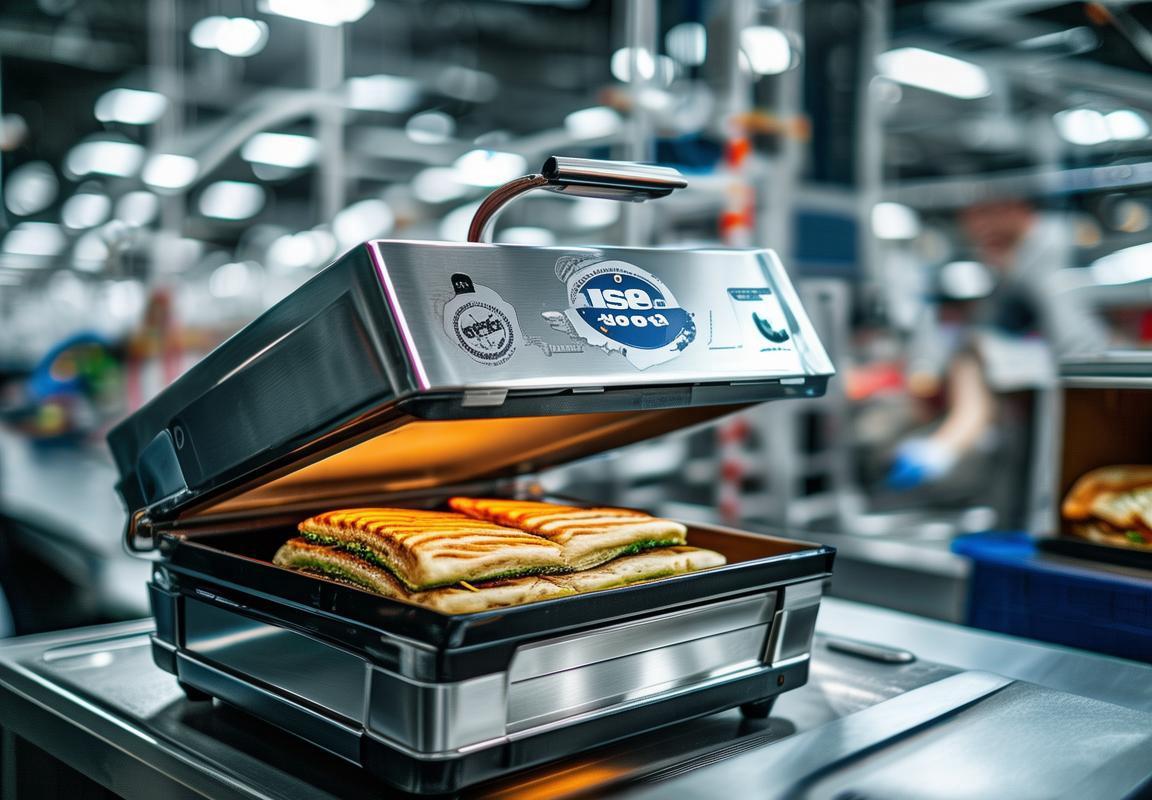
Why Panini Press Plants Are a Hot Spot in the Industry
In the bustling landscape of kitchen appliance manufacturing, panini press plants have emerged as a hot spot, attracting attention and investment like a magnet. These specialized facilities are not just production hubs; they are the beating heart of a market that’s growing stronger by the day.
These plants are the backdrop for cutting-edge technology and meticulous craftsmanship. They’re where the art of sandwich pressing meets precision engineering. The demand for panini presses has surged, driven by a culinary culture that craves convenience and innovation. Each plant is a testament to the industry’s commitment to delivering high-quality, reliable appliances to consumers worldwide.
The efficiency of these plants is nothing short of remarkable. They are designed to handle large volumes with speed and precision. From raw materials to finished products, the process is streamlined to ensure that every panini press that rolls off the assembly line meets the stringent quality standards expected in today’s market.
Quality is king in the panini press industry, and these plants are the sanctuaries of quality control. They employ advanced testing equipment and skilled technicians to inspect every aspect of the manufacturing process. Whether it’s the evenness of the press, the durability of the materials, or the ease of use, these plants are dedicated to excellence.
The design and production of panini presses are a blend of functionality and style. These plants are equipped with state-of-the-art machinery that can mold and shape materials with precision, ensuring that each press is not just a tool but also a statement piece for any kitchen. The attention to detail in these plants is what sets them apart, as they understand that the aesthetic appeal of a panini press can be just as important as its performance.
Moreover, these plants are hubs of innovation. They’re at the forefront of developing new materials, heating elements, and safety features that make panini presses even more appealing to consumers. The research and development departments within these plants are constantly pushing boundaries, looking for ways to make the next generation of panini presses more efficient, user-friendly, and eco-friendly.
In the panini press plants, sustainability is not just a buzzword; it’s a guiding principle. These facilities are increasingly adopting green practices, from energy-efficient manufacturing processes to recycling programs. The focus is on reducing the environmental footprint while maintaining the high standards of quality that customers have come to expect.
The skilled workforce within these plants is another reason they stand out. Employees are trained to not only operate the sophisticated machinery but also to innovate and improve upon existing processes. Their expertise is invaluable in maintaining the high level of consistency and quality that is synonymous with these panini press manufacturing facilities.
These plants also serve as centers for collaboration and knowledge sharing. They often work closely with suppliers, distributors, and even end-users to gather feedback and insights that can inform future product development. This collaborative approach ensures that the panini presses produced here are not just meeting current market demands but also anticipating future trends.
The rise of panini press plants as a hot spot in the industry is a reflection of the global kitchen appliance market’s dynamic nature. They are the engines that drive the innovation, quality, and efficiency that consumers have come to expect from their kitchen appliances. As the demand for panini presses continues to soar, these plants are not just meeting the challenge; they are setting the stage for the future of kitchen appliance manufacturing.
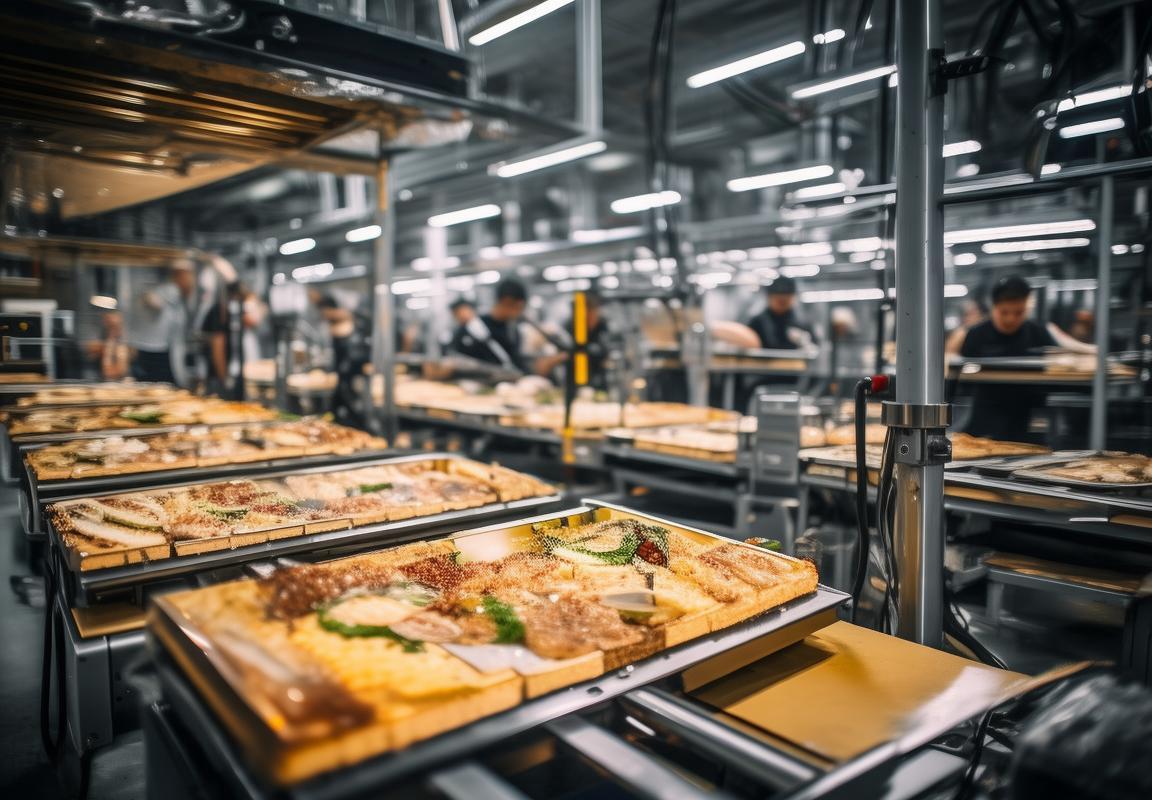
Key Trends in Panini Press Design and Features
In recent years, the design and features of panini presses have evolved significantly, reflecting a blend of innovation and consumer demand. Here’s a closer look at some of the key trends shaping the industry:
The sleek, modern aesthetic has become a staple in panini press design. Manufacturers are focusing on creating appliances that not only perform well but also complement the kitchen’s aesthetic. The sleek lines and minimalist approach are a far cry from the chunky, utilitarian models of the past.
One of the standout features in the latest panini presses is the inclusion of adjustable pressure settings. This allows users to control the level of pressure applied to the sandwiches, ensuring that every press results in a perfectly toasted, evenly cooked panini. It’s a feature that caters to both beginners and seasoned grillers who want to fine-tune their sandwich-making experience.
The integration of non-stick surfaces has been a game-changer for panini presses. No longer do users have to worry about food sticking to the plates, making cleanup a breeze. The high-quality non-stick coatings are durable and maintain their effectiveness over time, which is a major plus for busy households.
The rise of smart technology has not been left out in the panini press market. Many models now come with digital displays that allow users to monitor the cooking time and temperature. Some even have programmable settings, so you can set the perfect parameters for your favorite sandwiches, be it a classic ham and cheese or a gourmet avocado and pesto creation.
Safety features have also seen improvements. Modern panini presses often come with cool-touch handles, ensuring that users can safely remove the appliance from the heat without the risk of burns. Some models even have automatic shut-off functions, which turn off the device after a certain period to prevent overheating and potential fires.
The compact size of panini presses is another trend that continues to grow. With more people living in smaller spaces, the demand for appliances that don’t take up much counter space is on the rise. Compact panini presses are perfect for urban kitchens and anyone looking to save space without compromising on functionality.
The versatility of panini presses has expanded beyond just making sandwiches. Many models now come with reversible plates that can also be used for grilling vegetables, searing steaks, or even making omelets. This dual-purpose functionality is appealing to those who want to maximize their kitchen appliances’ utility.
There’s also a trend towards eco-friendly materials and energy-efficient designs. As consumers become more environmentally conscious, manufacturers are responding by creating panini presses that are not only sustainable but also energy-saving. From the materials used in construction to the energy consumption during operation, these appliances are designed to be kind to the planet.
Lastly, the customization options have increased. Some panini presses offer interchangeable plates, allowing users to switch between flat surfaces for sandwiches and grooved surfaces for paninis with a textured crust. This level of personalization is attractive to those who enjoy a touch of creativity in their cooking.
In summary, the design and features of panini presses are constantly evolving to meet the needs and desires of consumers. From sleek aesthetics and adjustable pressure settings to smart technology and eco-friendly construction, these appliances are becoming more than just a kitchen gadget; they’re an integral part of the modern culinary experience.
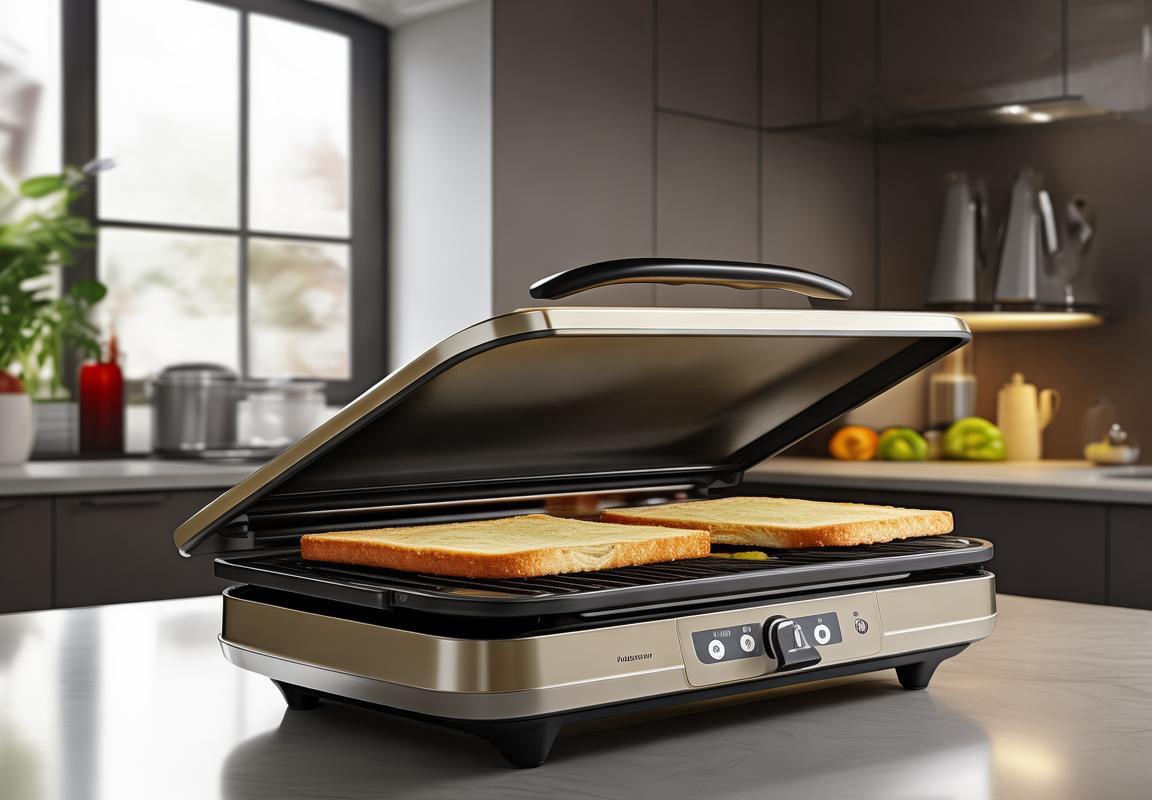
Consumer Preferences: What Makes a Panini Press Stand Out?
In the bustling world of kitchen appliances, panini presses have become a staple in many homes, and for good reason. Consumers are increasingly drawn to these versatile devices for more than just their ability to create delicious sandwiches. Let’s delve into the factors that make a panini press stand out in the eyes of consumers.
Gone are the days when a simple grill was enough to satisfy the needs of sandwich enthusiasts. Today’s panini presses come with a variety of features that cater to diverse preferences and cooking styles. From even heat distribution to non-stick surfaces, each innovation adds value to the user experience.
One standout feature that consumers appreciate is the adjustable temperature control. This allows for precision in cooking, ensuring that your sandwich is perfectly toasted, whether you prefer a crispy outside with a soft inside or a well-done crust. The ability to set the heat to different levels for various types of bread, like ciabatta or brioche, is a game-changer for those who enjoy a range of sandwich textures.
Non-stick surfaces are another key feature that has become a must-have for panini presses. No one wants to deal with the hassle of food sticking to the grill, and the convenience of being able to clean up quickly after cooking is highly valued. Consumers are drawn to brands that offer durable non-stick coatings that can withstand the test of time.
The design of a panini press also plays a significant role in consumer preference. Modern presses often come with sleek, compact designs that save counter space and are easy to store. The look and feel of the appliance can be as important as its functionality. Aesthetically pleasing units with ergonomic handles and intuitive controls make for a more enjoyable cooking experience.
One feature that has gained popularity is the ability to open the press to a flat position. This allows for the creation of open-faced sandwiches or even small pizzas, broadening the culinary possibilities beyond just sandwiches. Consumers who love to experiment with their meals find this versatility a major plus.
Portability is another factor that consumers consider. With the rise of outdoor dining and travel, a panini press that can be easily packed and taken on the go is highly sought after. The convenience of having a portable panini press means that you can enjoy your favorite sandwiches anywhere, from a picnic in the park to a road trip.
Safety features are also top of mind for consumers. The presence of cool-touch handles and surfaces, as well as locking mechanisms that prevent the press from accidentally closing, adds to the appeal of a panini press. Knowing that your family can safely use the appliance is a comforting feature that stands out in the market.
Another trend that has caught on is the inclusion of additional cooking surfaces, such as cast-iron grids for searing or a flat top for grilling vegetables. This allows consumers to use their panini press for a wider range of recipes, making it a more versatile tool in the kitchen.
The integration of technology is also reshaping the panini press market. Smart features, such as digital displays and programmable settings, are becoming more common. Consumers are looking for appliances that not only perform well but also offer a modern touch, reflecting their tech-savvy lifestyle.
Lastly, the environmental consciousness of consumers has influenced the design and features of panini presses. Eco-friendly materials, energy-efficient designs, and sustainable manufacturing processes are becoming important considerations. A brand that can offer a high-quality panini press while being mindful of its impact on the environment will undoubtedly stand out to many consumers.
In conclusion, what makes a panini press stand out in the eyes of consumers is a combination of its versatility, ease of use, safety features, and innovative design. As the market continues to evolve, it’s clear that the consumer is driving the demand for more sophisticated and user-friendly appliances.
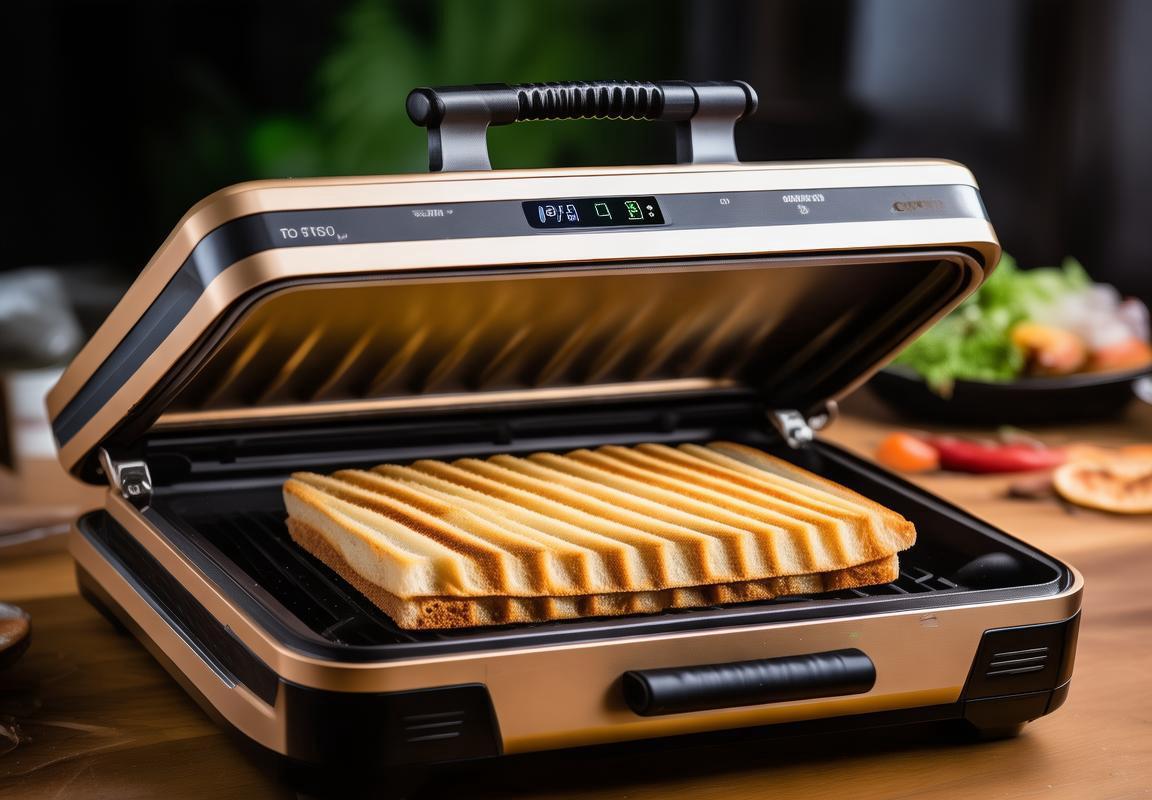
The Impact of Technology on Panini Press Production
The integration of advanced technology in panini press production has revolutionized the industry, enhancing efficiency and quality in every step of the manufacturing process. From automated assembly lines to smart temperature control systems, here’s how tech is shaping the future of panini press production.
Automated Assembly LinesGone are the days of hand-crafted panini presses. Modern production facilities now rely on automated assembly lines to streamline the process. These lines can handle the precise placement of components like heating elements, hinges, and handles with incredible accuracy and speed. This not only reduces the risk of human error but also increases the production capacity of panini press plants.
Smart Temperature ControlOne of the key features of a panini press is its ability to evenly distribute heat. Technology has played a significant role in ensuring that these presses achieve consistent temperatures across their surfaces. Smart sensors and digital control systems are now standard in the industry, allowing for precise temperature adjustments. This not only guarantees the perfect cooking experience but also extends the life of the heating elements by preventing overheating.
Material InnovationThe materials used in panini press manufacturing have seen a significant evolution. Modern presses are often made with high-quality, heat-resistant materials that can withstand intense pressure and heat without warping or deforming. Materials like stainless steel, which is durable and easy to clean, have become the norm. Additionally, non-stick coatings are now more advanced, making it easier to remove food particles and maintain hygiene.
Energy EfficiencyEnergy consumption is a crucial factor in the manufacturing process. Technological advancements have led to the development of more energy-efficient panini presses. These include improvements in insulation and the use of energy-saving heating elements. Not only does this reduce operational costs for manufacturers, but it also aligns with the growing global demand for eco-friendly products.
Customization and PersonalizationTechnology has also enabled greater customization in panini press design. Manufacturers can now produce presses with various sizes, shapes, and features tailored to specific market needs. Personalization isn’t just limited to aesthetics; it extends to functionality. Smart presses can be equipped with programmable settings, allowing users to adjust cooking times and temperatures according to their preferences.
Quality AssuranceQuality control has been greatly enhanced by technology. High-definition cameras and computer-aided design (CAD) software are used to inspect and validate each component before assembly. This ensures that only the highest-quality parts are used in the final product. Additionally, real-time monitoring systems can detect any anomalies during the production process, allowing for immediate corrective action.
Connectivity and Smart FeaturesThe rise of the Internet of Things (IoT) has also influenced panini press production. New models are being developed with connectivity features that allow users to control and monitor their presses remotely via smartphones or tablets. These smart features not only provide convenience but also open up new possibilities for data collection and analytics, which can help manufacturers improve their products over time.
Warranty and ServiceTechnology has also impacted the post-production phase. Manufacturers can now offer extended warranties and enhanced customer service through the use of remote diagnostics. If a problem arises, a service representative can remotely access the panini press and troubleshoot the issue, reducing the need for physical repairs and minimizing downtime for the consumer.
In conclusion, technology has had a profound impact on panini press production, from the initial design and material selection to the final assembly and customer service. These advancements not only improve the quality and functionality of the end product but also contribute to the overall sustainability and efficiency of the manufacturing process.
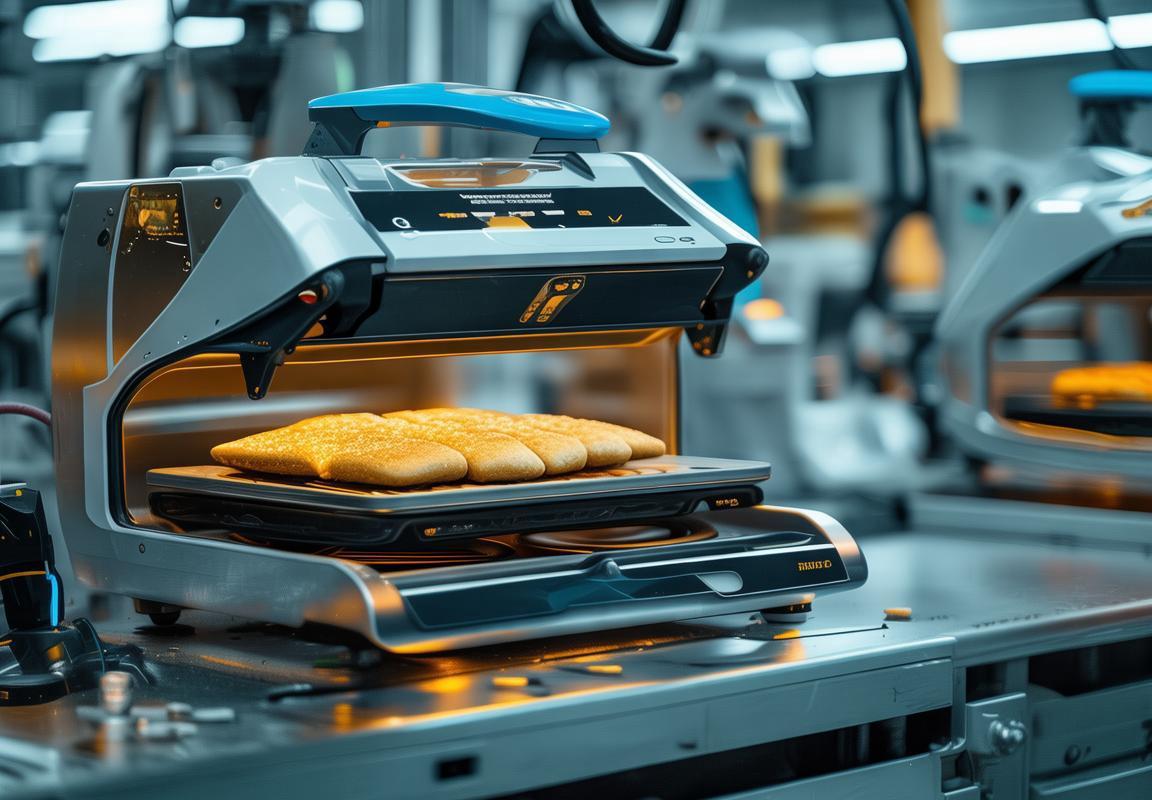
Distribution Channels: How Panini Presses Reach the Market
In the ever-evolving landscape of kitchen appliances, panini presses have emerged as a favorite among consumers. These devices have found their way into homes across the globe, and the journey from the factory floor to the kitchen counter is a testament to the intricate distribution channels that make them accessible. From online marketplaces to brick-and-mortar stores, here’s how panini presses reach the market:
The rise of e-commerce platforms has revolutionized the way products are distributed. Online retailers like Amazon, eBay, and Walmart have become go-to destinations for consumers looking for a wide variety of panini presses. These platforms offer a vast selection, competitive pricing, and the convenience of doorstep delivery. Suppliers and manufacturers often use these channels to reach a broad audience, capitalizing on the ease of online shopping.
Specialized kitchen appliance stores have long been a staple in the distribution landscape. These stores often carry a curated selection of high-quality panini presses, offering customers the opportunity to see and touch the product before making a purchase. They provide a personalized shopping experience, allowing customers to compare different models and features. This face-to-face interaction can be a significant selling point for manufacturers looking to differentiate their brand.
Department stores and home goods retailers also play a crucial role in the distribution of panini presses. These stores often have a dedicated kitchen section, where customers can find a range of appliances, including panini makers. The coexistence of various brands in these stores allows for side-by-side comparisons, making it easier for consumers to make an informed decision.
Wholesale markets are another avenue through which panini presses are distributed. These markets serve as a hub for small businesses, local shops, and international buyers. By purchasing in bulk, these retailers can offer competitive prices and a wide variety of products to their customers. This distribution channel is particularly beneficial for niche markets and specialty stores.
Food service and catering industries also contribute to the distribution of panini presses. These devices are not just for home use; they are a staple in cafes, restaurants, and catering services. Distributors and suppliers cater to these businesses by providing commercial-grade panini presses that can withstand heavy use and are built to last. This segment of the market often requires a different approach to distribution, focusing on durability and reliability.
Social media has become a powerful tool in the distribution of panini presses. Influencers and bloggers often showcase their favorite appliances, including panini makers, to their followers. By leveraging social media platforms, manufacturers can tap into a targeted audience and create buzz around their products. This marketing strategy can lead to direct sales and increased brand awareness.
In recent years, there has been a growing trend of direct-to-consumer (DTC) distribution. Manufacturers are bypassing traditional retail channels and selling their panini presses directly to customers. This approach allows for greater control over the sales process, from product design to customer service. DTC brands often offer exclusive features and limited editions, creating a sense of exclusivity and fostering a loyal customer base.
The importance of sustainability in distribution cannot be overstated. With increasing environmental concerns, manufacturers are looking for greener ways to distribute their products. This includes using eco-friendly packaging, minimizing carbon footprints during transportation, and supporting local communities. Consumers are increasingly valuing sustainability, and businesses that prioritize these practices are likely to stand out in the market.
The global distribution of panini presses is a complex web of channels and strategies that ultimately brings these convenient kitchen gadgets to the consumer. From the bustling e-commerce platforms to the cozy local stores, the journey of a panini press is as diverse as the customers who enjoy them. As the market continues to grow, distributors and manufacturers must adapt to new trends and technologies to ensure that panini presses continue to reach customers around the world.
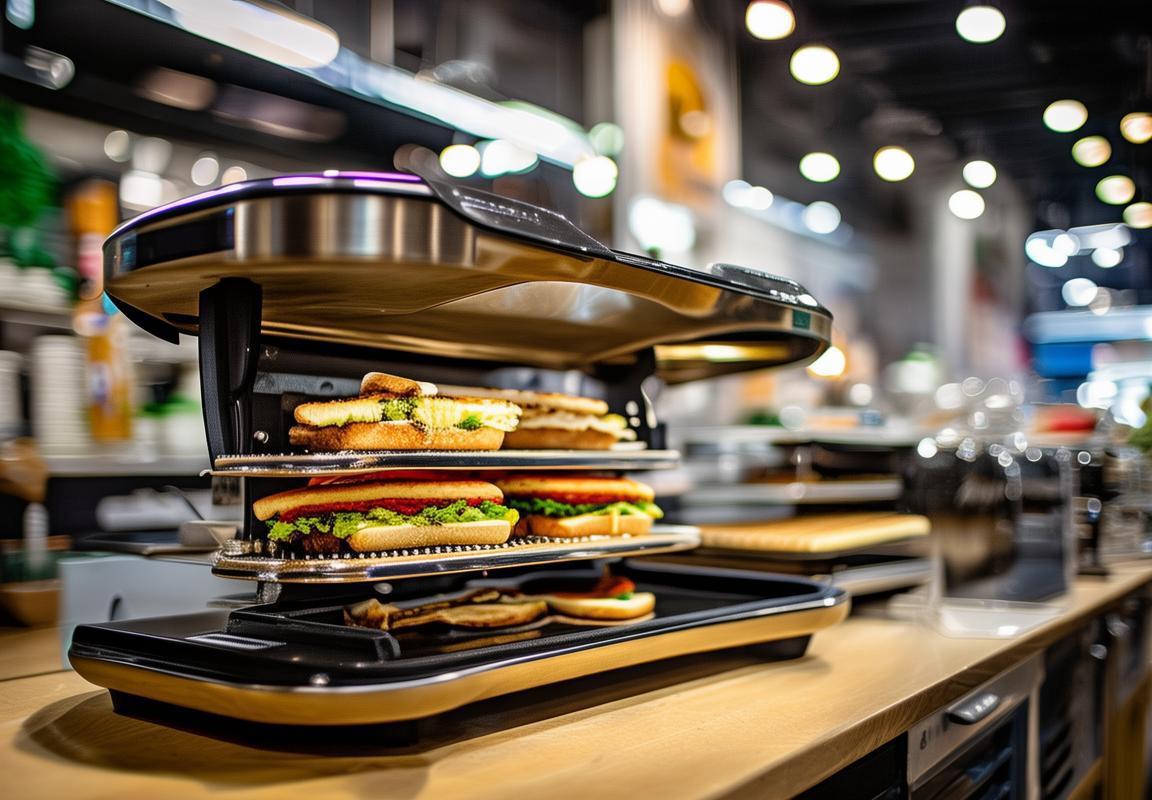
Market Analysis: Growth Projections and Opportunities
The rise in popularity of panini presses has reshaped the kitchen appliance market, offering consumers a quick and convenient way to create delicious sandwiches. This surge in demand has created a niche for panini press plants, which have become hotspots in the industry, driving innovation and efficiency. Let’s delve into the factors that make these facilities so pivotal.
The production of panini presses is a highly specialized process, requiring precise engineering and meticulous quality control. As a result, panini press plants are often equipped with state-of-the-art machinery to ensure consistent and high-quality output. These plants are typically characterized by their streamlined operations, focusing on precision in every step of the manufacturing process. The attention to detail in these facilities is what sets them apart and contributes to their prominence in the industry.
Efficiency is a cornerstone of panini press plants, as these factories need to handle high production volumes while maintaining product excellence. The adoption of automated systems and robotic assembly lines has become increasingly common, allowing for faster and more reliable production. These advanced technologies not only increase output but also reduce waste, leading to cost savings and a more sustainable production process.
The rise of eco-friendly practices has also played a significant role in the success of panini press plants. These factories are investing in energy-efficient equipment and sustainable materials, aligning with global trends toward environmental responsibility. This commitment to green production not only attracts eco-conscious consumers but also helps in meeting the stringent environmental regulations that are becoming more prevalent in many regions.
In addition to the technological advancements and environmental considerations, the growth of panini press plants is also fueled by a dynamic consumer market. As more people adopt healthier eating habits, there’s a growing preference for at-home sandwich making. This shift has prompted panini press manufacturers to create devices that cater to diverse tastes and dietary requirements, from vegan-friendly options to those with adjustable heat settings.
Another key aspect that makes panini press plants hotspots is their focus on continuous innovation. The design and functionality of panini presses have evolved significantly over the years. From simple two-sided cooking to multi-functional presses that can toast, grill, and even bake, these appliances now offer a range of features that appeal to consumers. This continuous innovation keeps panini press plants at the forefront of the industry, always striving to meet and exceed consumer expectations.
Collaboration between panini press plants and culinary experts has also been a game-changer. These partnerships often result in the development of new recipes and cooking techniques that can be achieved with a panini press. By incorporating such culinary insights into their designs, these plants not only create products that can deliver restaurant-quality results but also foster a community of enthusiastic sandwich enthusiasts.
In the competitive landscape of the kitchen appliance industry, panini press plants stand out by focusing on user experience. From ergonomic handles and intuitive interfaces to sleek and stylish designs, these factories understand that the end-user’s satisfaction is crucial. This user-centric approach ensures that every panini press that leaves the plant is not just a kitchen gadget but a companion that enhances the culinary experience.
The success of panini press plants is also a testament to the power of marketing and brand identity. As these facilities have grown, so has their ability to create and maintain strong brands that resonate with consumers. The story behind these brands—whether it’s about a family legacy or a passion for cooking—adds a personal touch that makes customers feel a connection to the product.
In conclusion, the hot spot status of panini press plants is a multifaceted phenomenon. It’s driven by technological advancements, environmental responsibility, consumer preferences, culinary collaborations, user experience, and powerful branding. As the demand for panini presses continues to soar, these plants will undoubtedly continue to play a crucial role in shaping the future of the kitchen appliance market.
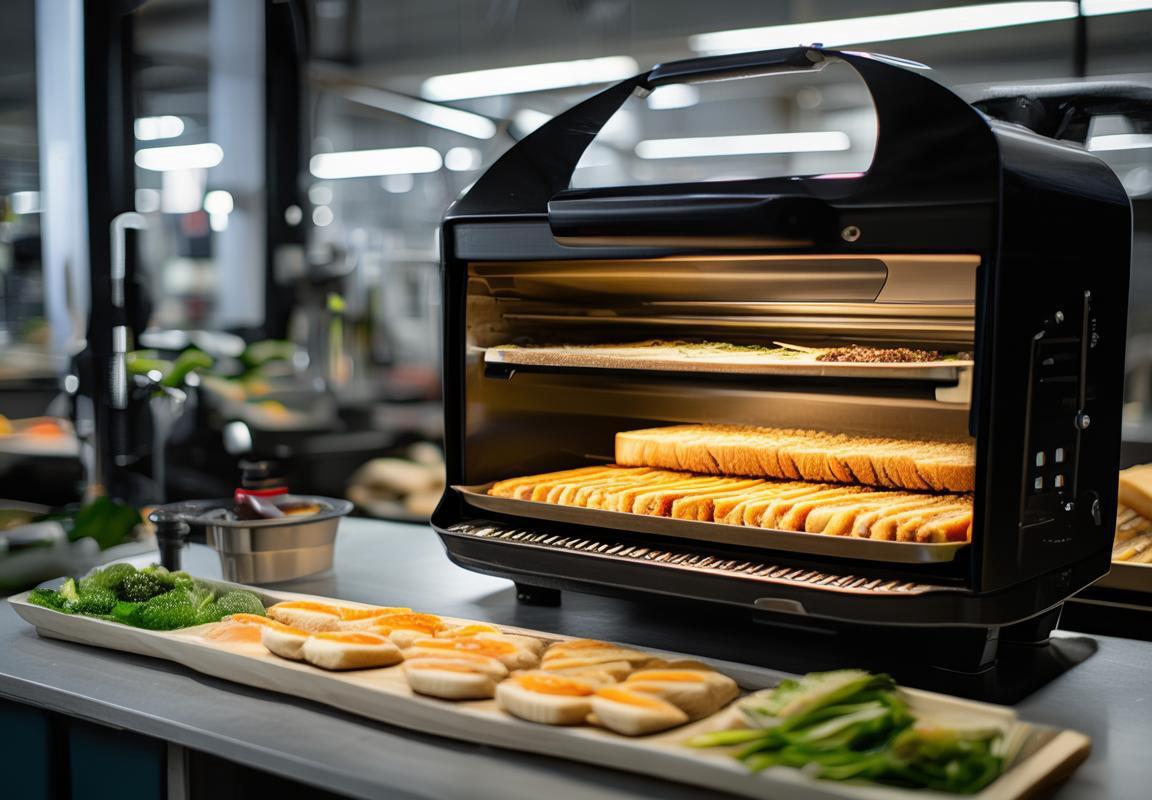
Conclusion: The Future of Panini Presses in the Global Kitchen Appliance Scene
The world of kitchen appliances is ever-evolving, and the panini press has carved out a unique niche in this dynamic field. As we look ahead, it’s clear that these compact marvels of modern cuisine are not just a fleeting trend but a staple that’s here to stay. From sleek designs to innovative features, panini presses are becoming an integral part of the global kitchen appliance scene. Here’s a glimpse into the future.
The integration of smart technology is reshaping the landscape, with presses that not only cook but also connect to users’ lives in unprecedented ways. From Wi-Fi-enabled models that allow for remote monitoring to presses with customizable settings that cater to individual tastes, the future is about convenience and personalization.
As we delve into the specifics, it’s important to note that the global kitchen appliance market is not monolithic. Different regions, like Europe and North America, have their unique preferences and cultural influences that shape the direction of panini press innovation. For instance, in Europe, there’s a strong emphasis on health and wellness, which is reflected in the rise of compact, multi-functional presses that cater to both casual and health-conscious consumers.
In North America, the trend is towards convenience and ease of use, with a growing number of households embracing panini presses as a quick and delicious solution for lunch and dinner. The market for these appliances is expanding, and the future looks promising as new households continue to adopt them as a kitchen staple.
The role of technology in shaping the future of panini presses cannot be overstated. Automation and advanced engineering are leading to presses that are not only more efficient but also more intuitive to use. Features like automatic temperature control, non-stick surfaces, and sleek, easy-to-clean designs are becoming standard, making the cooking experience less of a chore and more of a pleasure.
Innovation is not just limited to the cooking aspect; the design of panini presses is also evolving. Modern presses are sleeker, with sleeker lines and compact sizes that fit seamlessly into any kitchen setting. The trend towards portable presses is also gaining traction, with models that are easy to transport and use on the go, catering to the needs of the increasingly mobile consumer.
From a consumer perspective, what truly sets a panini press apart is its ability to deliver a perfect grilled sandwich every time. The key factors that make a panini press stand out include even heat distribution, adjustable pressure controls, and the ability to cook a variety of foods, from traditional sandwiches to wraps, flatbreads, and even pizzas.
The market analysis for panini presses paints a picture of steady growth and numerous opportunities. As health consciousness continues to rise, consumers are looking for appliances that can provide them with a healthier option to fast food and takeout. This shift in preference is creating a fertile ground for panini presses, which offer a quick, nutritious, and satisfying meal option.
Moreover, the versatility of panini presses is a significant factor in their appeal. They are not just for sandwiches anymore; the possibilities are endless. From cooking breakfast items like omelets and pancakes to preparing a variety of savory snacks, these appliances are becoming a must-have in many kitchens.
Looking ahead, the future of panini presses in the global kitchen appliance scene is bright. As manufacturers continue to innovate and cater to consumer preferences, we can expect to see a wider range of features and functionalities. The key will be to balance technological advancements with user-friendliness and affordability.
Ultimately, the future of panini presses lies in their ability to adapt to changing trends and consumer needs. Whether it’s through the integration of smart technology, the development of new materials, or the expansion into new markets, these appliances have a promising future ahead of them. As the world becomes more fast-paced and convenience-driven, the panini press is poised to remain a popular and valuable kitchen tool.